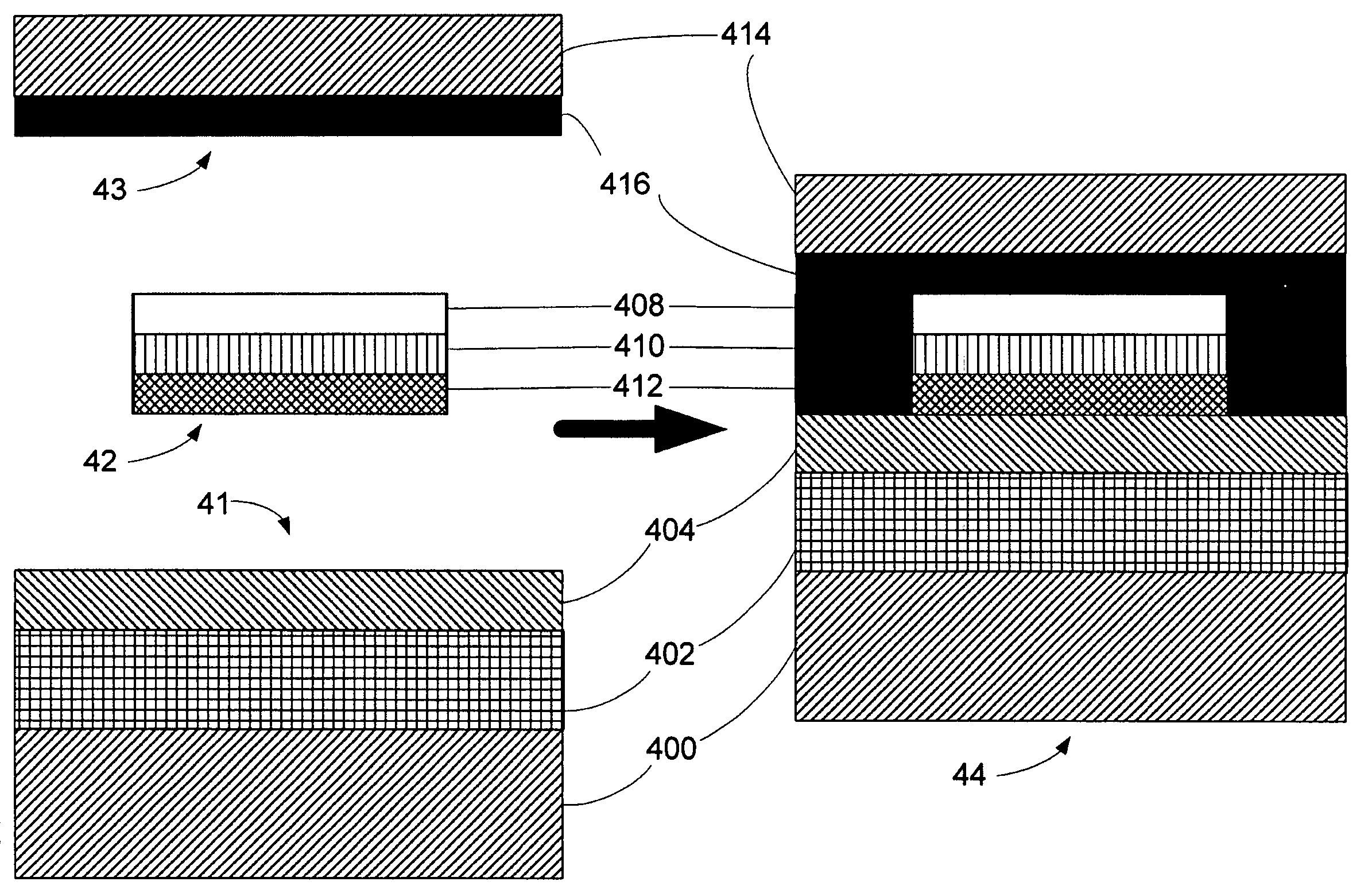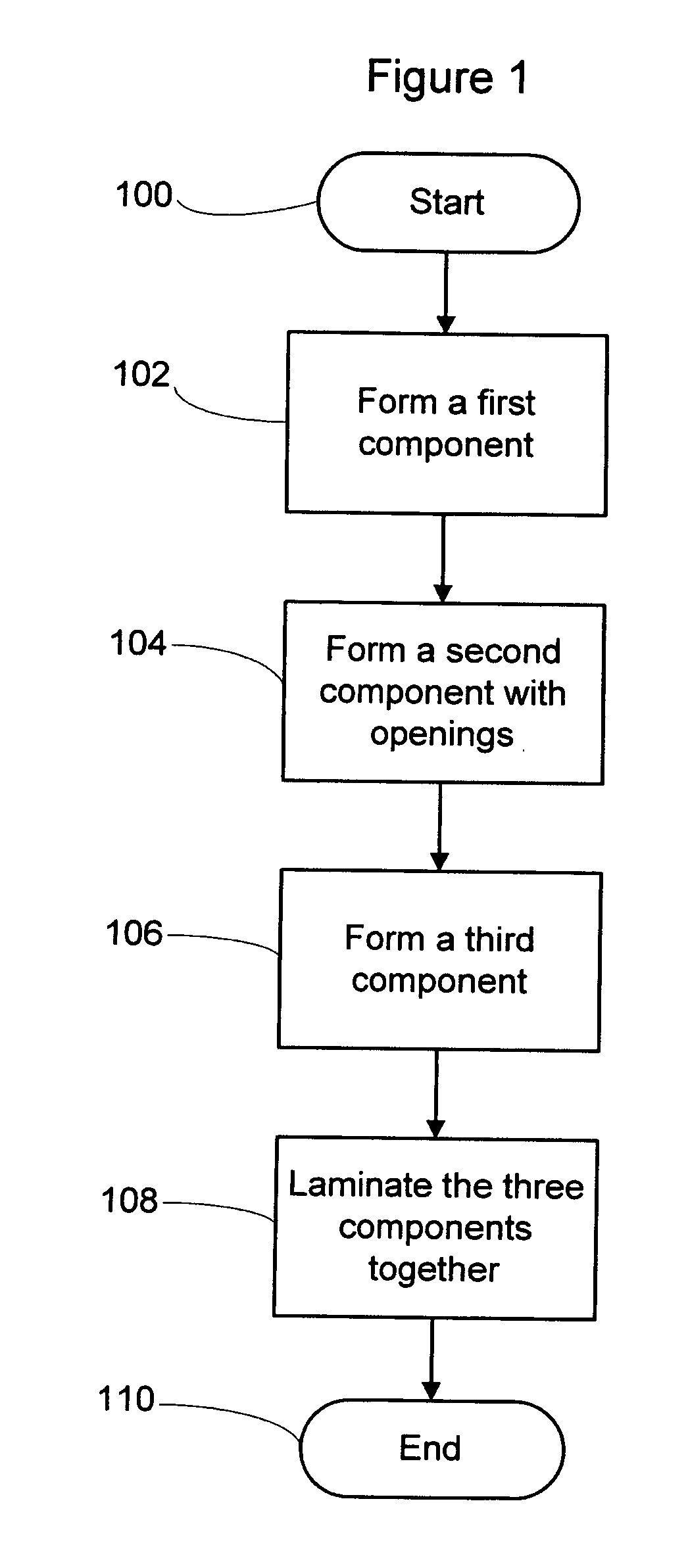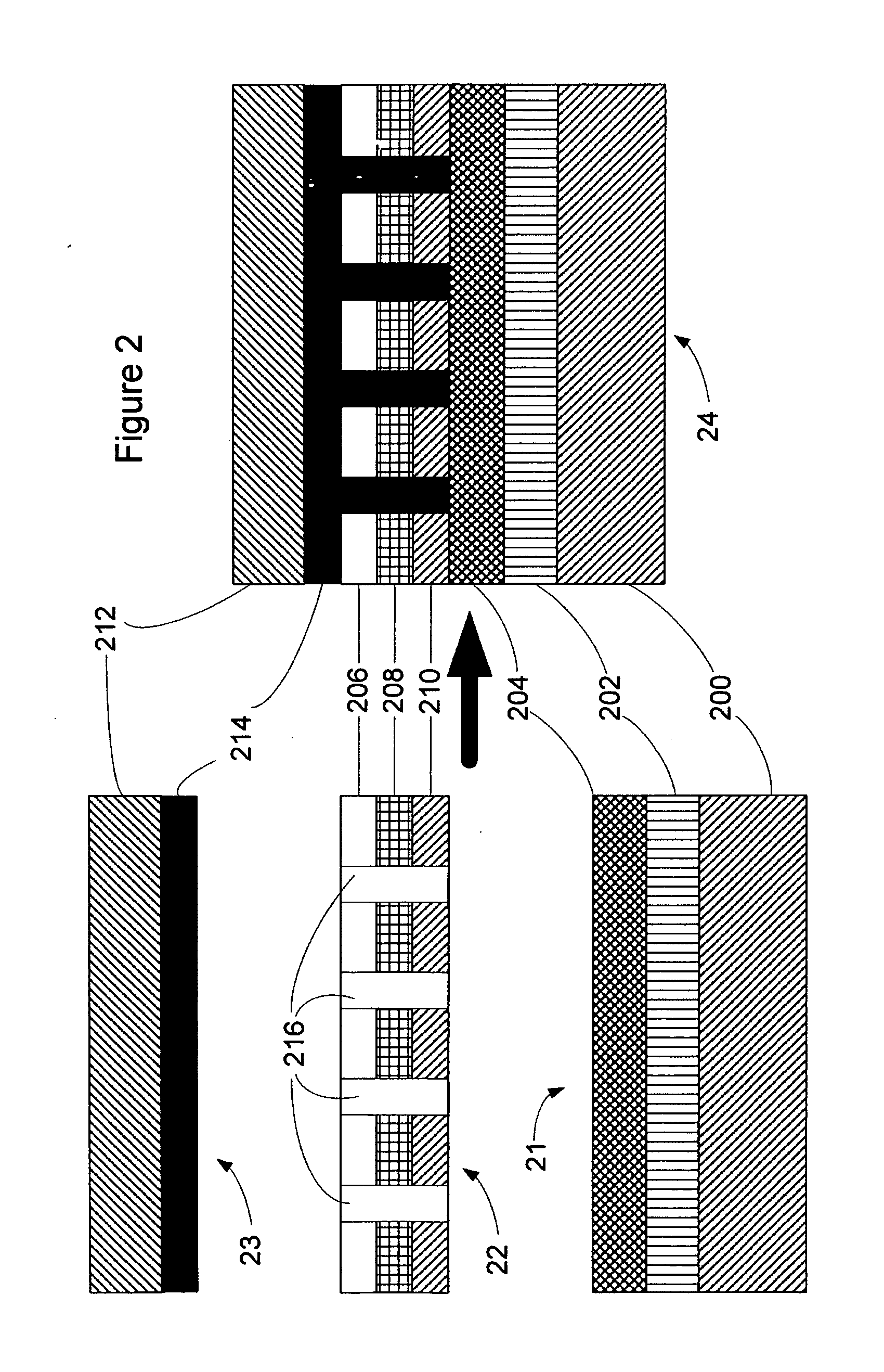Organic electro-optic device and method for making the same
- Summary
- Abstract
- Description
- Claims
- Application Information
AI Technical Summary
Benefits of technology
Problems solved by technology
Method used
Image
Examples
example 1
[0045] An OLED device was formed as follows. A first component comprised a polyethylene terephthalate (PET) substrate coated with an ITO layer and a PEDOT layer. A second component comprised a PET substrate coated with an ITO layer and a layer of polymer blend in which an emissive polymer, ADS329 (Poly(9,9-dioctylfluorenyl-2,7-diyl), purchased from American Dye Source, Inc. (555 Morgan Boulevard, Baie D.Urfe, Quebec, Canada H9X 3T6), was blended with an adhesive material, Norland Optical Adhesive 68 (“Norland 68”), purchased from Norland Products, Inc. (Cranbury, N.J. 08512, U.S.A.). The first component thus had a structure of PET / ITO / PEDOT and the second component had a structure of PET / ITO / (polymer blend). These two components were subsequently laminated together followed by a short (30 seconds) exposure to UV irradiation. Before lamination, photoluminescence was only observed (due to ADS329) from the second component. After lamination, the laminated film was separated on purpose....
example 2
[0046] In another experiment, two working devices with a structure of PET / ITO / PEDOT / (polymer blend) / Al / PET were made via lamination of separate components, wherein Al was an aluminum cathode layer and the polymer blend comprised a blend of ADS329 and Norland 68. The first device was made using a component with a structure of PET / ITO / PEDOT / (polymer blend) and a component with a structure of PET / Al. The second device was made using a component with a structure of PET / ITO / PEDOT and a component with a structure of PET / Al / (polymer blend). The polymer blend layer was spin-coated and the laminated film stacks were cured using a long wavelength (365 nm) UV-lamp for five minutes in air. Both devices showed enhanced mechanical properties, i.e. strengthened adhesion between the PEDOT and the emissive polymer, as well as between the emissive polymer and the Al cathode.
example 3
[0047] In another example, emissive polymer ADS329 was mixed with adhesive material Norland 68. The blend solution was prepared by mixing 52 milligrams of ADS329 with 19 milligrams of degassed Norland 68 in an amber vial at room temperature in air, purging the mixture in nitrogen for 40 minutes, adding 4 milliliters of M-xylene (anhydrous), heating the solution at 75° C. (stirring with a stir bar) for one hour and cooling down to room temperature in a nitrogen-purged box. An organic light emitting device (“Device A”) was fabricated following the steps of: (1) spin-coating PEDOT onto a pre-cleaned, UV-ozoned ITO substrate; (2) baking the ITO / PEDOT substrate at 170° C. for 30 minutes and then cooling it down to room temperature in a nitrogen-purged box; (3) spin-coating the blend solution, as prepared above, onto the ITO / PEDOT substrate, then partially curing it with a long-wavelength (365 nm) UV-lamp for 30 seconds; (4) transferring the sample into an argon-purged box (moisture and o...
PUM
| Property | Measurement | Unit |
|---|---|---|
| Temperature | aaaaa | aaaaa |
| Temperature | aaaaa | aaaaa |
| Time | aaaaa | aaaaa |
Abstract
Description
Claims
Application Information
 Login to View More
Login to View More - R&D
- Intellectual Property
- Life Sciences
- Materials
- Tech Scout
- Unparalleled Data Quality
- Higher Quality Content
- 60% Fewer Hallucinations
Browse by: Latest US Patents, China's latest patents, Technical Efficacy Thesaurus, Application Domain, Technology Topic, Popular Technical Reports.
© 2025 PatSnap. All rights reserved.Legal|Privacy policy|Modern Slavery Act Transparency Statement|Sitemap|About US| Contact US: help@patsnap.com



